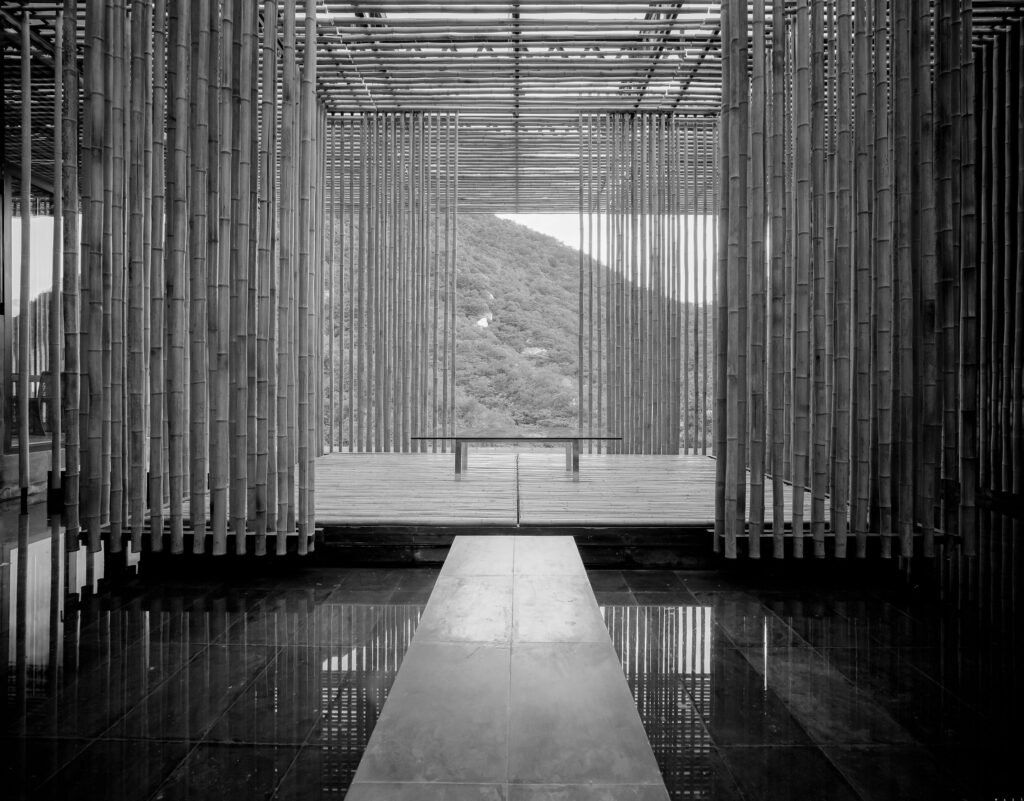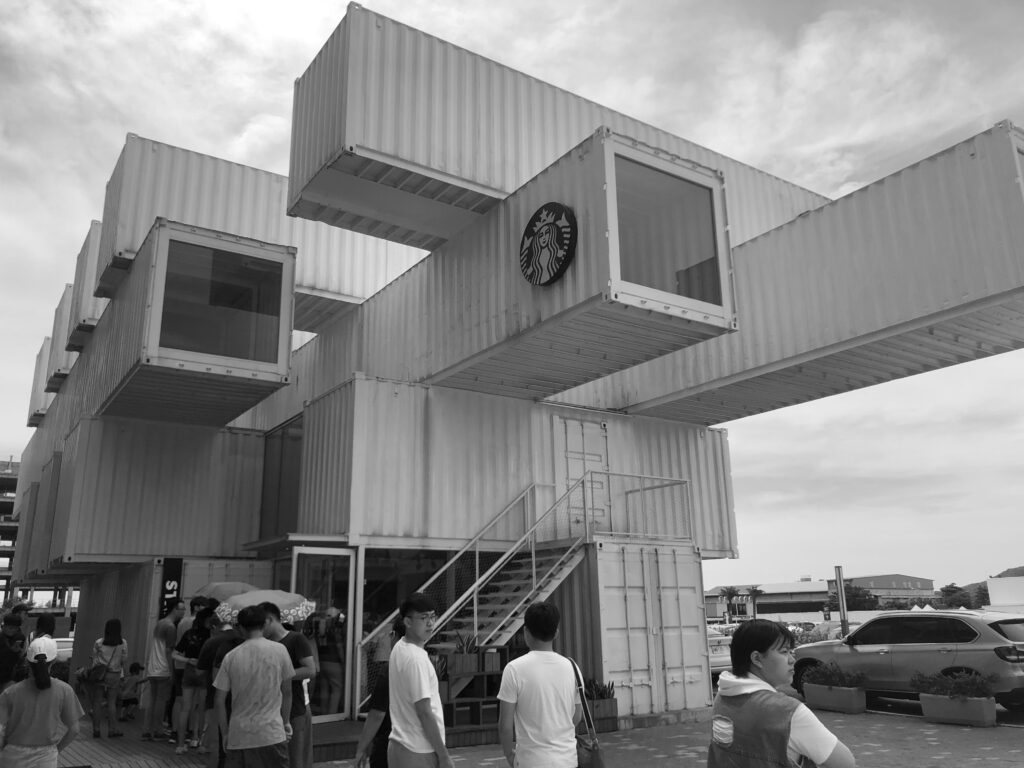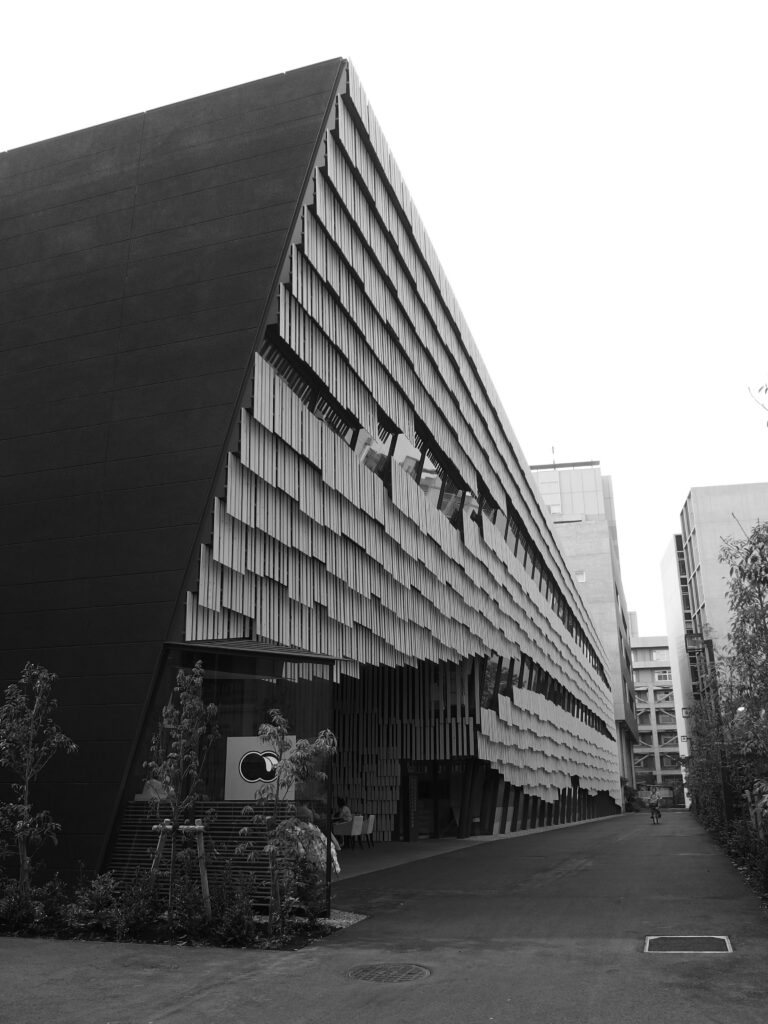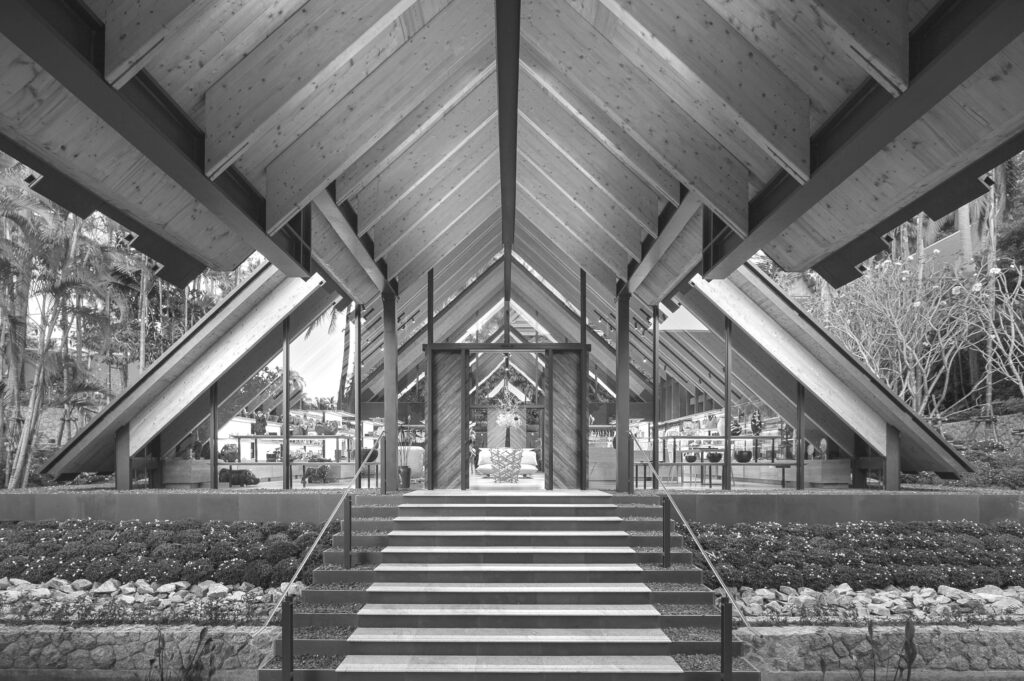Will speaks to Kengo Kuma in his dreams
Kengo Kuma’s Design Secrets: A Journey into Nature’s Embrace
Will Hunter’s pen paused mid-air. A faint breeze, carrying the earthy scent of cedarwood, stirred his hair. He blinked. The harsh hum of fluorescent lights was gone, replaced by the soft rustle of leaves. The cramped dorm room where he had been sketching moments ago dissolved into a sprawling Japanese garden.
.
Before him stretched koi ponds shimmering like liquid gemstones, their ripples catching the golden hues of twilight. Elegant pavilions emerged seamlessly from the landscape, their walls appearing as though grown from the surrounding trees. The scene was surreal yet profoundly tranquil—a living symphony of nature and design.
.
Then, a figure emerged from the dappled shadows by a koi pond. Dressed in a simple linen robe, his presence was as understated as it was commanding. Kengo Kuma. His gentle smile seemed to echo the wisdom of the ancient forest around him. “Will,” he greeted, his voice like the murmur of water over stones, “you’ve arrived just in time. Let us explore the dance of architecture and nature.”
Lessons in Design Harmony with Kengo Kuma
Will found himself seated on a weathered cedar bench, the soft gurgle of the pond filling the silence. His mind buzzed with questions. “Mr. Kuma,” he began tentatively, “your designs seem to breathe with life. How do you choose materials that feel so… alive?”
.
Kengo’s gaze softened as he gestured to the pavilion. “Materials,” he said, “are storytellers. Local wood, for instance, speaks of its land—the sun it has soaked, the rain it has endured. By using these, we honor the site’s narrative. This is how architecture becomes part of its environment, not an intrusion.”
.
Will nodded, his eyes tracing the latticework of the pavilion. Sunlight filtered through, casting intricate patterns that danced across the ground.
Light as a Storyteller
“Light, too, is a storyteller,” Kengo continued. “In this pavilion, the lattice allows light to filter gently, mirroring the patterns of leaves overhead. It’s not just functional; it’s experiential. It blurs the line between the built and the natural, creating harmony.”
.
Will’s thoughts drifted to Kuma’s iconic works like the Asakusa Culture and Tourism Center in Tokyo. Its layered wooden façade echoed the traditional machiya houses, blending past and present seamlessly.
The Beauty of Imperfection
Intrigued, Will leaned forward. “Your designs embody minimalism and wabi-sabi, yet they feel deeply human. How do you balance those elements?”
.
Kengo smiled. “Wabi-sabi teaches us the beauty of imperfection. Aging wood, a crack in stone—these are not flaws but the fingerprints of time. Minimalism amplifies this by focusing on essence rather than excess. In a tea house, for instance, simplicity allows the beauty of a single handcrafted teacup to shine.”
Sustainability and Technology
“What about sustainability?” Will asked. “And the role of technology in your work?”
.
“Sustainability is our responsibility,” Kengo replied. “We cannot embrace nature while exploiting it. I prioritize local, sustainably sourced materials. As for technology, it must enhance, not overshadow. Prefabrication can save time, but the human touch—the imperfections of craftsmanship—should never be lost.”
The Wisdom of Books
As the koi pond reflected the deepening twilight, Kengo placed a hand on a nearby book: “Natural Architecture Now” by Francesca Tatarella. “This book,” he said, “captures the philosophy of merging architecture with its environment.” Will recognized it as a call to delve deeper into how natural elements inspire design.
.
He recalled another book, “The Japanese House: Material Culture in the Modern Home” by Inge Daniels. Its exploration of materiality and cultural resonance suddenly felt more vivid in this dreamscape.
A Vision for the Future
As the garden bathed in the warm glow of sunset, Will asked his final question: “What excites you most about the future of architecture?”
.
Kengo’s eyes gleamed. “Collaboration. Imagine cities that breathe, buildings that nurture their inhabitants, and communities thriving in harmony with nature. Architects, engineers, and the people we design for must unite to create such a world. That is the future I see.”
A Dream’s Echo
As Will woke to the familiar sounds of his dorm room, the dream lingered—a vision of architecture seamlessly entwined with the natural world. He picked up his sketchbook, his hand guided by inspiration. The lessons of Kengo Kuma would stay with him, shaping not just his designs but his philosophy as an architect.
Learning Points
- Material as Storyteller: Local materials honor the narrative of the site and blend architecture with its environment.
- The Role of Light: Thoughtful manipulation of light creates harmony and enhances human experience.
- Wabi-Sabi in Design: Embracing imperfection fosters beauty that evolves with time.
- Sustainability: Responsibly sourced materials and harmony with nature are non-negotiable.
- Collaboration: The future of architecture lies in unity among disciplines and communities.
Keywords
- Kengo Kuma
- Japanese architecture philosophy
- Sustainable materials in design
- Wabi-sabi in architecture
- Minimalism and nature
- Harmony in architectural design
- Sustainable wood sourcing
- Light in architecture
- Kengo Kuma pavilion design
- Nature-inspired architecture
This fictional story is set within the dreams of Will Hunter, a character created to explore the intersection of imagination and design. Dive into his dreamscape and discover how storytelling can illuminate real-world lessons in architecture and creativity.
Some of the links on this website may be affiliate links. This means that if you click on the link and make a purchase, we may receive a small commission. We only recommend products and services that we genuinely believe will be beneficial to our readers.








